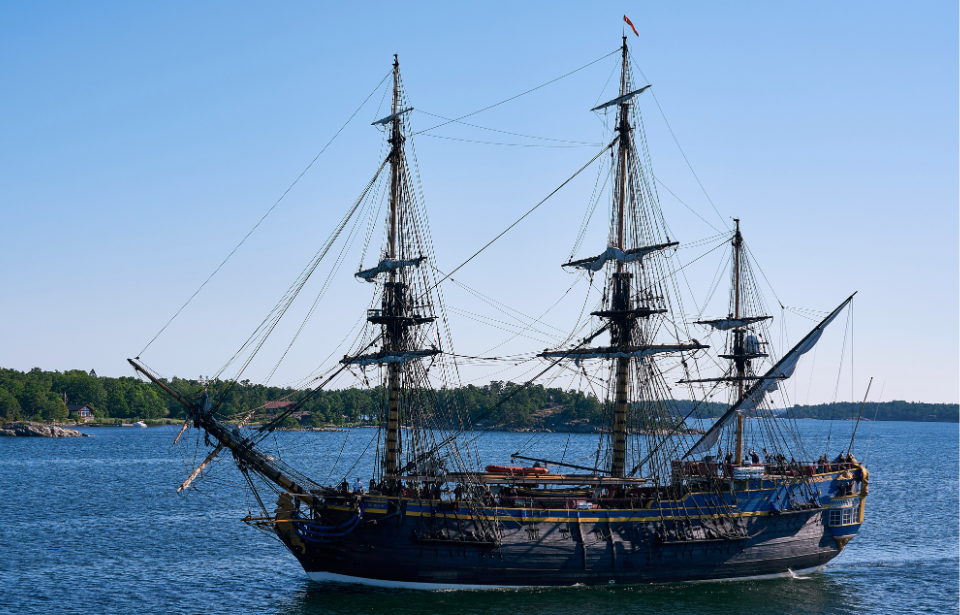Götheborg of Sweden – or Götheborg III – is a seagoing replica of the Swedish East Indiaman Götheborg I, which was launched in 1738. The original ship sank off the coast of Gothenburg, Sweden on September 12, 1745, following a voyage to China. In 1995, construction of a replica began, with the new vessel’s hull launching in 2003. The new Götheborg successfully completed her first Baltic Sea Tour in 2008, and is the world’s largest operational wooden sailing ship.
Götheborg I
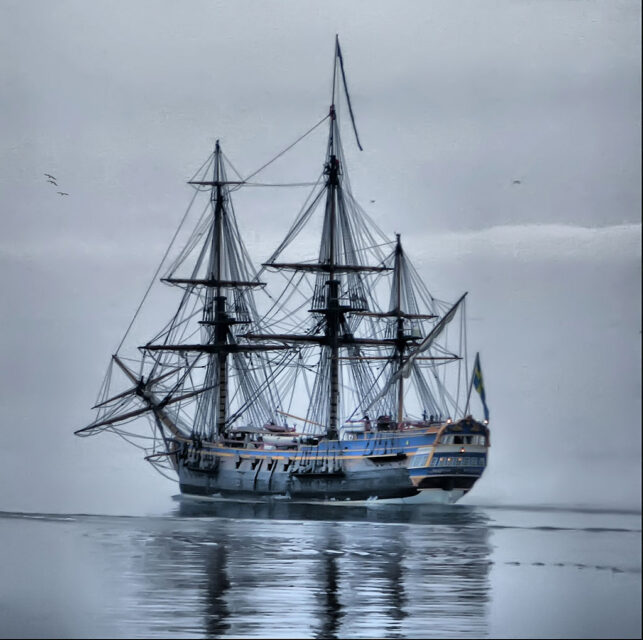
Götheborg I was launched in 1738. Built at the Terra Nova Shipyard in Stockholm, she was reportedly constructed in only one and a half years. The ship was named after Gothenburg, where the Swedish East India Company was located. The ship made her maiden voyage in 1739, and proceeded to make three trips to China for trading Swedish timber, tar, copper, iron, silk and porcelain.
In 1745, Götheborg I sank while entering Gothenburg Harbor. She was returning from a 30-month voyage and only had 3,000 feet before reaching her berth. Despite clear and calm weather, the ship crashed into Knipla Börö, a rock in the harbor.
The reason for the crash is unknown. However, it’s believed that a hydrographic phenomenon called “dead water” caused the ship to lose rudder control and run aground. Götheborg I began taking on water, and it’s reported that, within a few minutes, the level inside the ship was 60 inches high. Despite filling with water, the vessel was still attached to the rock, which allowed for much of her cargo to be taken off.
On December 9, 1984, five divers found porcelain at the bottom of the harbor, at the location of Götheborg I‘s shipwreck. Their discovery was confirmed two years later, following research into the ship’s sinking. Excavations occurred between 1986-92.
Constructing a replica of Götheborg I
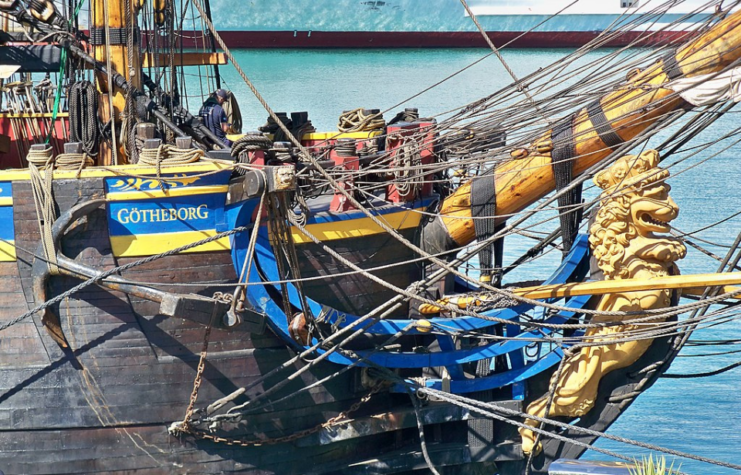
In the 1980s, while excavating the Götheborg I shipwreck, the idea to build a replica was formed. On June 11, 1995, at Eriksbergs Wharf in Gothenburg, the keel for the new Götheborg was laid down. In an age-old tradition, two silver coins – one from 1745 and another from 1995 – were placed in halved joints of the section.
The idea was for the ship to look identical to the original. In an added element of authenticity, the Götheborg of Sweden was built using traditional techniques. The only change was the addition of era-appropriate headroom; the average person today is taller than those who lived in the 18th century, so this was increased by 10 cm.
The project cost 250 million Swedish krona – equivalent to almost $40 million USD. About 60 percent of the cost was covered by sponsors, with 40 percent being publicly funded.
New versus old
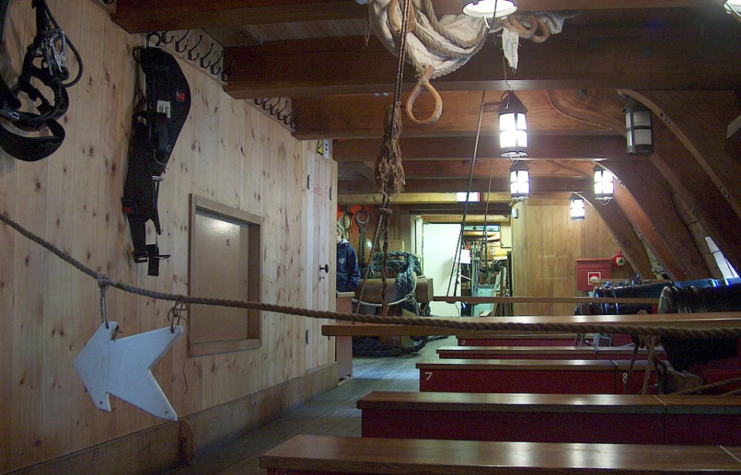
The overall design and look of the Götheborg of Sweden is just like the original. That being said, the interior of the ship has had many modern elements incorporated. These were necessary for the ship to pass national and international safety regulations and include satellite navigation and communications systems and safety equipment. The vessel also has modern creature comforts, such as a kitchen, lavatories, washing machines, refrigerators, ventilation and desalinization equipment.
The most noticeable difference between Götheborg I and the replica is the latter’s propulsion. The Götheborg of Sweden is rigged with 21,140 square feet of sails and two 550-horsepower Volvo Penta diesel engines with two shafts. The vessel is also equipped with two 241-horsepower Volvo Penta 103 generators, which power the ship’s various systems.
Götheborg of Sweden takes to the high seas
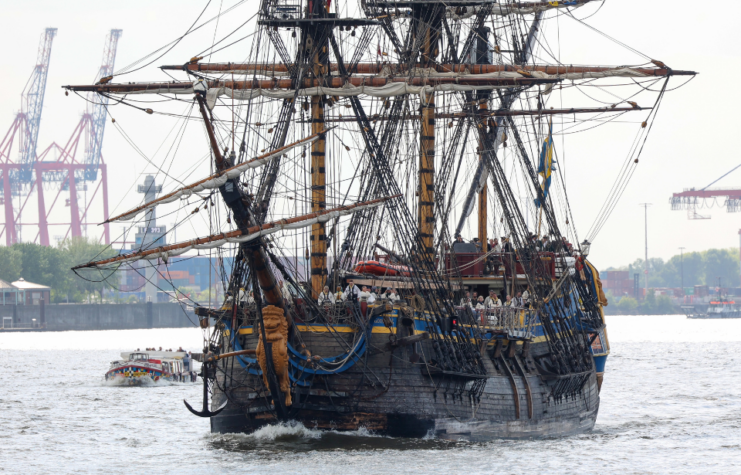
After completing various tests, the Götheborg of Sweden embarked on her first voyage to China in October 2005. The journey was a success, with the ship returning to Sweden in June 2007. The route taken was almost identical to that which the original vessel would have journeyed. One of the only differences was the replica’s return via the Suez Canal, which didn’t exist when Götheborg I was sailing.
Between 2008-10, the Götheborg of Sweden made three tours in the Baltic Sea, Scandinavia and across northern Europe. Another two European tours were conducted in 2012 and ’13.
Götheborg of Sweden to the rescue
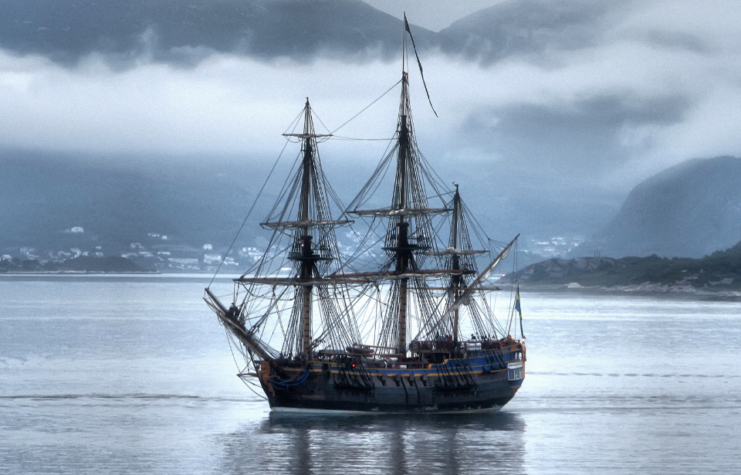
On April 25, 2023, the yacht Corto departed Cherbourg, France for Camaret, on the coast of southern Brittany. Early the next morning, roughly 50 nautical miles from the coast, the vessel’s rudder broke.
Her crewmen sent out a call for help, which the Götheborg of Sweden answered, offering to tow the yacht to Paimpol. Initially, the men were skeptical. They emphasized that they were a small, eight-meter boat and feared the ship might be too big and too fast, ultimately causing damage to the yacht.
However, they didn’t expect to see the Götheborg of Sweden. David Moeneclaey, Corto‘s skipper, recalled, “We did not expect to see a merchant ship from the East India Company of the XVIII century. This moment was very strange, and we wondered if we were dreaming. Where were we? What time period was it?”
More from us: The United States Once Came to the Aid of North Korea During a Pirate Attack
The replica towed the yacht to Paimpol and, after arriving, stayed with the small vessel until a French rescue boat arrived to bring her into port. The crew of the Götheborg of Sweden displayed professionalism and kindness during the affair. Moeneclaey later said the ship “is much more than just a boat. It embodies the noblest values of the sea, and we are honored to have had the chance to cross your bath and benefit from your help.”
